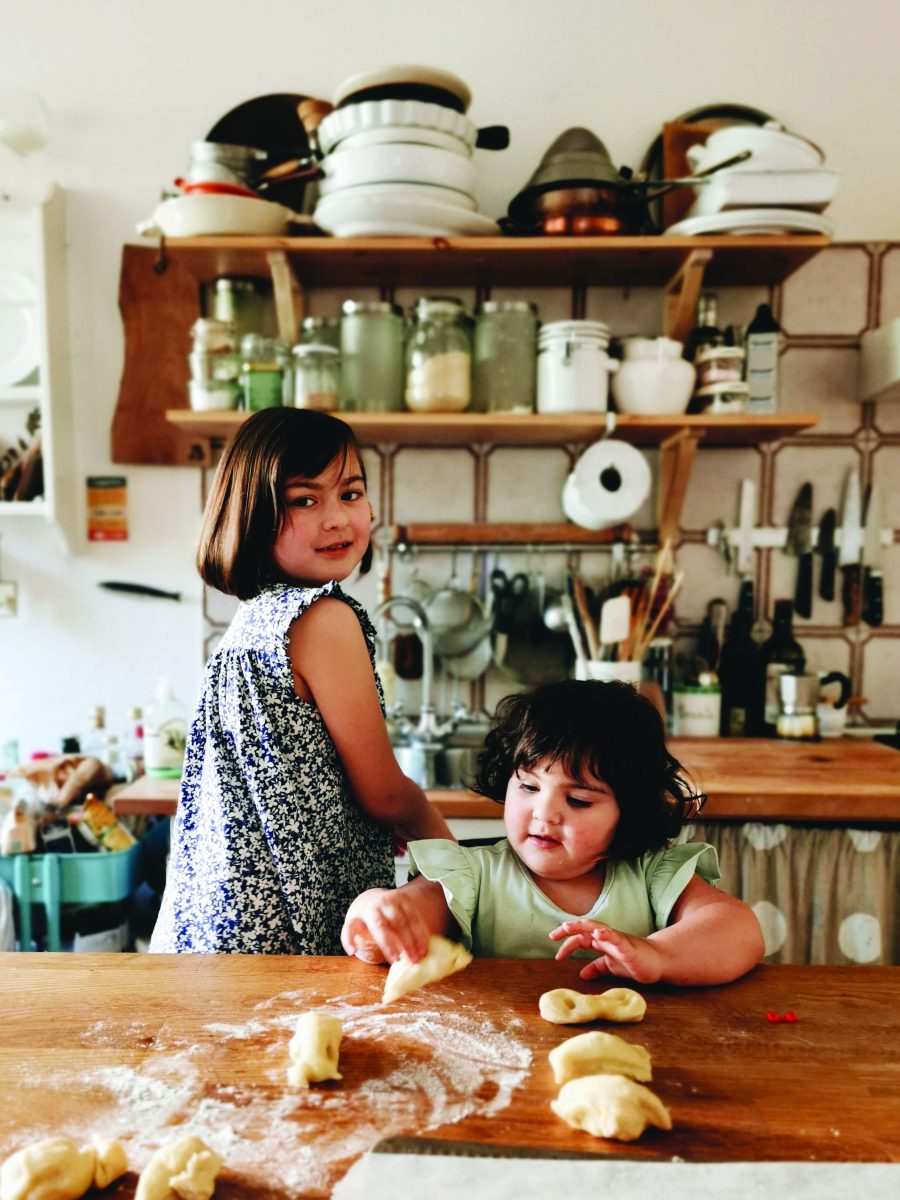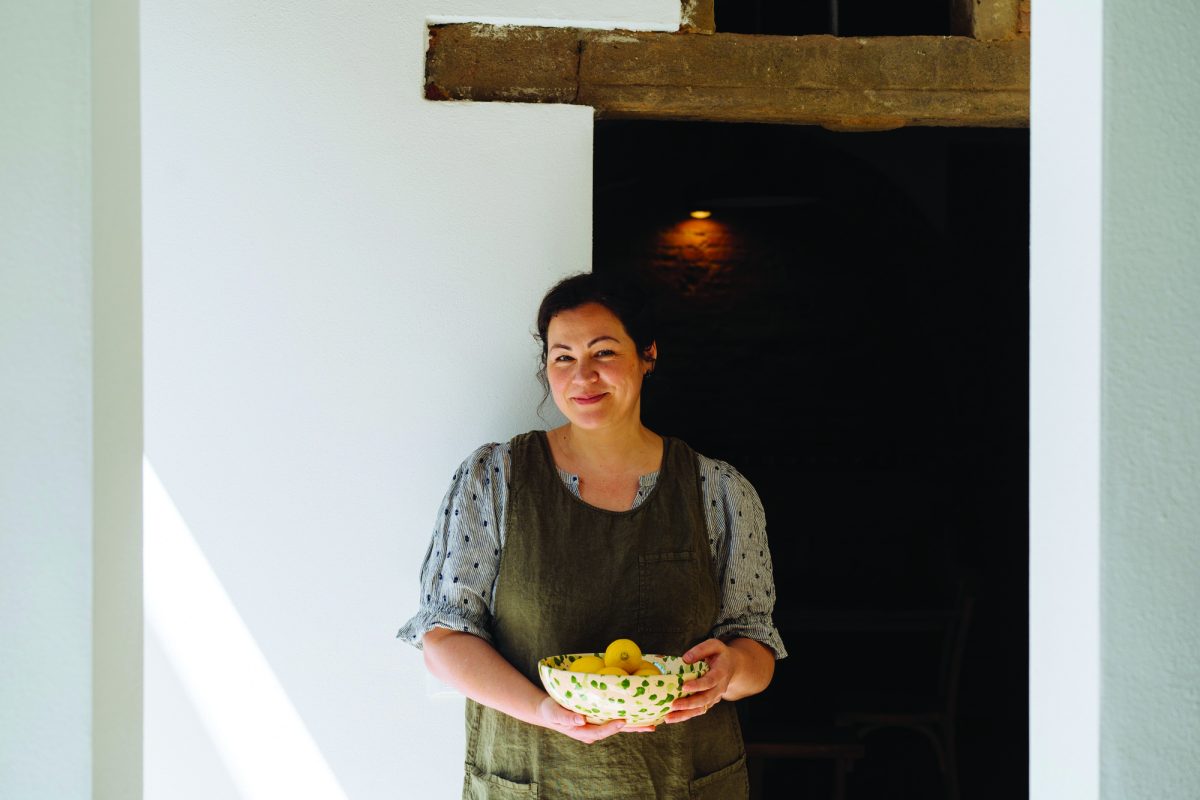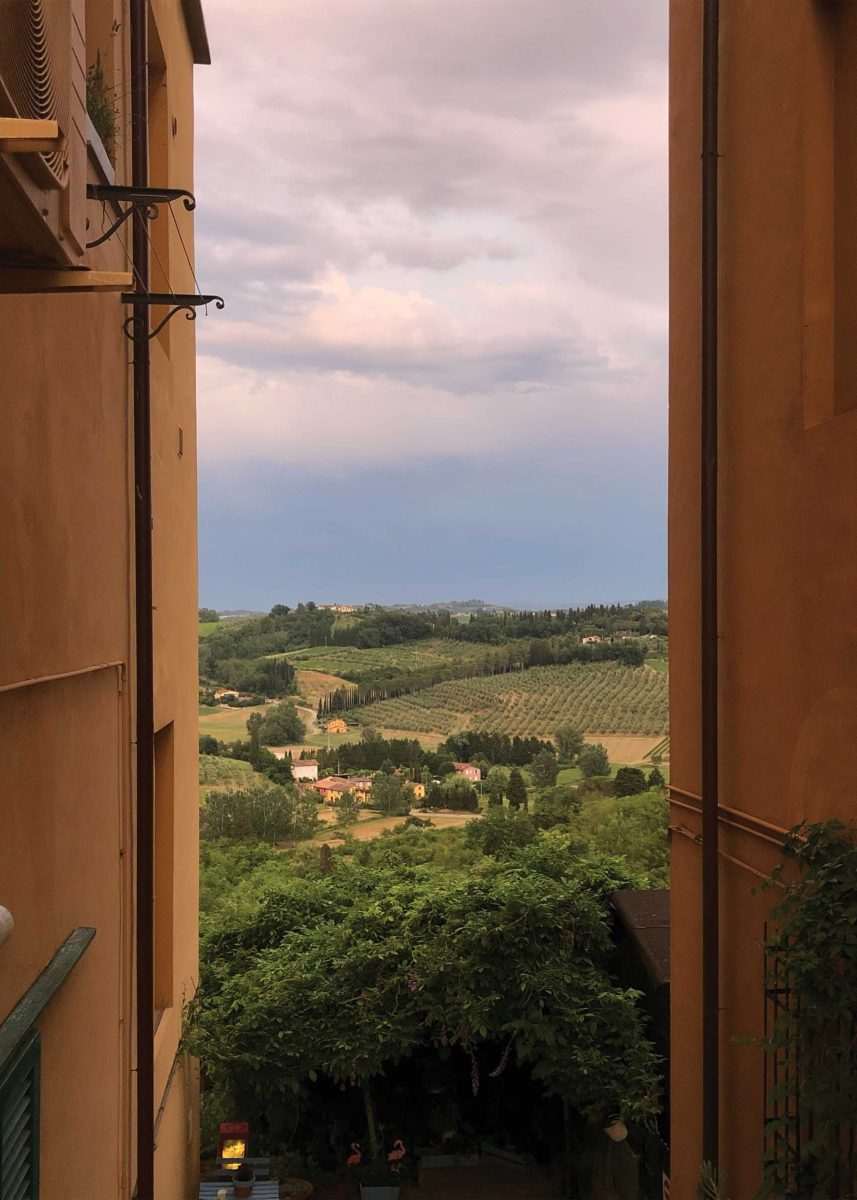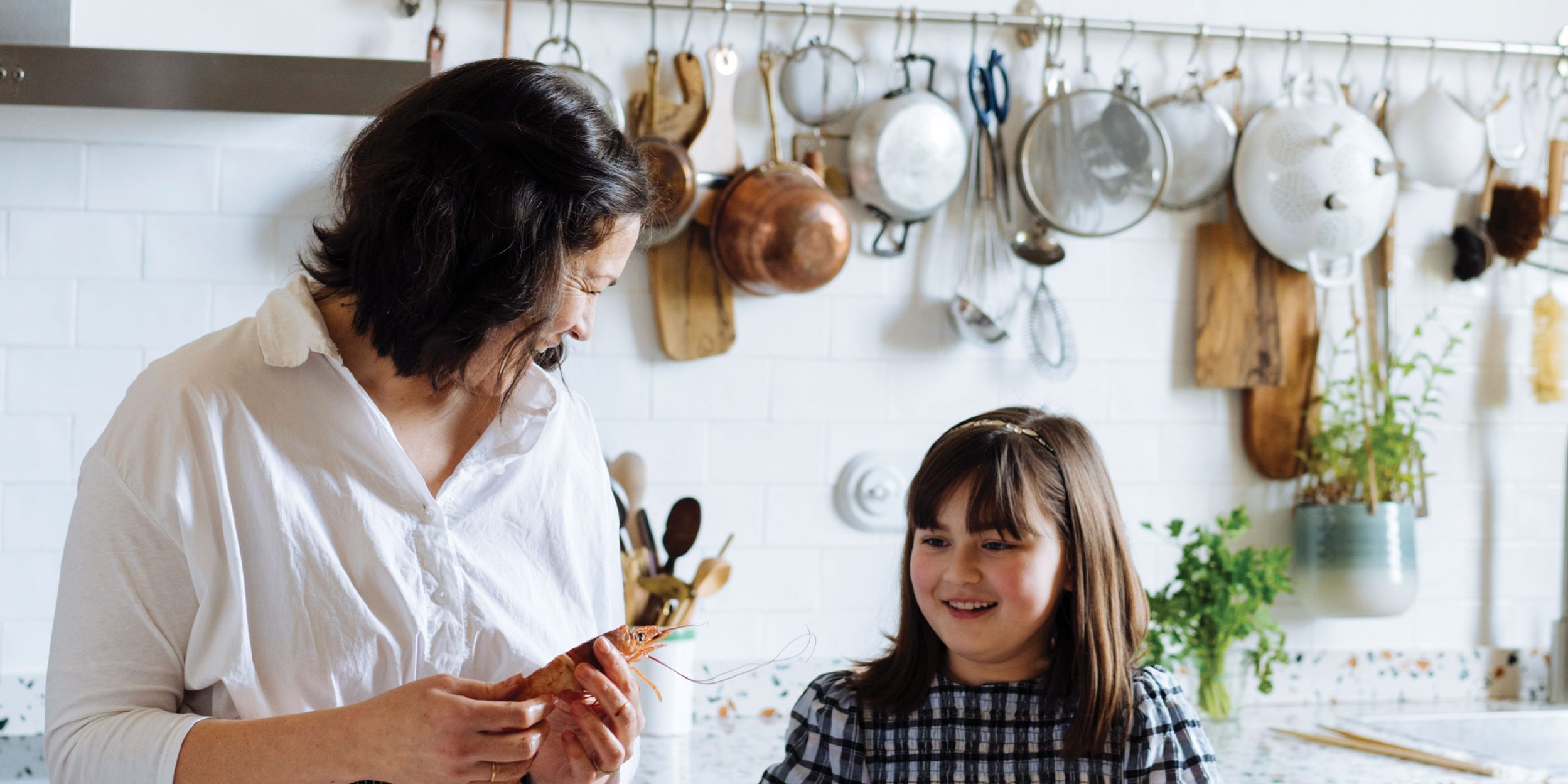As a cookbook author and food writer, on a usual day you will find me at home in a small town in Tuscany, tinkering with recipes, cooking or photographing dishes for my recipe column or my newsletter.
My two children, aged 10 and 5, grew up in this environment, often participating by cracking eggs, rolling pasta and cooking alongside me, much to my delight. Even if they aren’t always interested in eating what we make, cooking together is about the connection we have and the life skills they learn—preparing food, yes, but also learning to love food.
I’ve been living in Italy for almost two decades. I moved from Sydney, Australia, in 2005. I grew up in Australia in the ’80s and China in the ’90s with a Japanese mother who, like her own mother, often saw food like some kind of medicine. Eat something vinegary when you’re tired, and eat piping hot, grilled, spicy rice cakes to keep you warm all day if you’re cold. I got the message growing up: food nourishes you and helps you feel good.
When I began to discover Italian cuisine, especially when I started my own little family, I realized how important this relationship with food (and feeding) is to Italians. Food is their love language— I think that is maybe why I feel so at home in Italy, as I speak this language fluently.
Seeing food and drink as something joyful, something to be savoured and as an oppor- tunity to bring people together is one of the things that I feel Italians have really turned into an art form. In Why Italians Love to Talk About Food, Elena Kostioukovitch writes, “The aroma of a simmering ragú, the bouquet of a local wine, the remembrance of a past meal: Italians discuss these details as naturally as we talk about politics or sports, and often with the same flared tempers.”
In Italy, sitting at the dinner table is about being together. From a very young age, eating together is prioritized as a social activity. At pre-school and elementary school, the children sit with their teacher and their entire class for lunch, where they all eat the exact same meal. Having dinner together as a family is important, so the children wait for their parents to get home from work before sitting down to eat. It means even young Italian children have relatively late bedtimes—often 9 p.m. on a weeknight, if not later, but the tradeoff is spending precious time together over a meal.
Food is not just fuel, and mealtimes are not just for eating. Food is an opportunity to connect with others. It is also a part of culture and identity; of family and traditions; it is a source of joy—it is not something to feel “guilty” about. Savouring a pastry and cappuccino for breakfast or a gelato in the evening while enjoying a passeggiata (leisurely stroll) during the long, hot summer months, is not only the norm, but a time- honoured ritual that everyone, no matter their age, looks forward to.
For us, the dinner table is also a place where I want my children to remember feeling safe and happy because we can connect with each other if we aren’t feeling relaxed. My eldest daughter has been an anxious eater since she was around 3 years old. She used to turn down playdates because the thought of eating or being offered certain foods in front of other people made her so nervous. Eating at school filled her with so much anxiety that she would sometimes fast for days on end, as I watched her rib cage grow ever more defined. She experiences all emotions most strongly in her gut, as do all of us. If the peace is disturbed, she may suddenly lose her appetite, even if I put her favourite dish in front of her.
To help her have a positive relationship with food, even when she didn’t feel like eating, I emphasized the importance of respecting the signals her body was sending her about her own hunger or appetite. I also wanted to make sure she still viewed food as something enjoyable, accessible, and familiar. Every so often, just for fun, we would make pasta, pizza, cakes, or gelato at home, and even film recipe videos together. It didn’t even matter if she ate the food we made or not, because we were just exploring. I would let her play with flour or dried beans and legumes—she would make drawings out of them, run her hands through them. I brought her to the market with me and we would have fun naming the fruit and vegetables, or we would go pick wild berries, visit friends’ farms and watch goats getting milked, bees busy in their hives, mozzarella being made or collect fresh eggs. Living in Italy has made all of this so much easier for us, and she has grown out of her anxiety around food over the years. She now gladly enjoys eating meals with us as well as her friends and schoolmates, ordering from trattoria (small Italian restaurant) menus with ease and poise.

When her sister was born a few years later, this approach to food came naturally. My youngest has been overweight from a very young age. She is active, healthy, and eats nutritious, homemade food, but she just has a larger body—like I did when I was a child. As with my eldest daughter, I believe it’s so important to help children, especially girls, understand that food can be an immense source of joy and connection instead of something to be feared or restricted. As a result, we cooked together; she has always been naturally drawn to helping me in the kitchen, just like I did with my mother when I was a child.

Whenever I shared content of my bubbly, smiley girl making pasta like an expert, helping her sister make panna cotta, rolling out homemade puff pastry or enjoying minestrone, messages would come flooding in—especially from people who once looked like my daughter or who had children with bodies similar to hers. Strangers have told me how much their children love to watch my daughters cook, or that they wished their parents had not demonized food when they were growing up.
Feeding people, especially your own loved ones, is not easy. It can be difficult for us as adults (especially if you’ve listened to anything that diet culture tells us) to listen to and trust our own bodies, let alone for parents to trust their children’s bodies (they are usually more intuitive than we realize). Supporting my daughter in her relationship with her body can sometimes feel like swimming against the current, because society doesn’t normalize or celebrate the fact that all bodies are beautiful and that they can even change (often dramatically) over different phases of our lives. But I believe the best support I can give my children—both of them—is the same support I received growing up: the knowledge that they and their bodies will always be loved unconditionally, no matter what size or shape they may be (or become in the future). I need them to know they are enough, just the way they are.

I have learned that all I want for my family, or anyone that I feed, is for them to feel comfortable, safe, and loved at the table. I trust their appetites, I trust them to listen to their own bodies and I respect their preferences (we all have them). I feel very grateful that we live in a culture where a positive outlook on food is celebrated at every meal. This—appreciating where food comes from and adopting a philosophy where meals are about being together and feeling loved, rather than demonizing, forcing or restricting food—is a path to a positive way of life. It empowers me to raise two girls who love themselves, who are confident, respectful of their own bodies and who unapologetically pursue joy. Feeling good together at the table is just as important, if not more, as the food itself.




